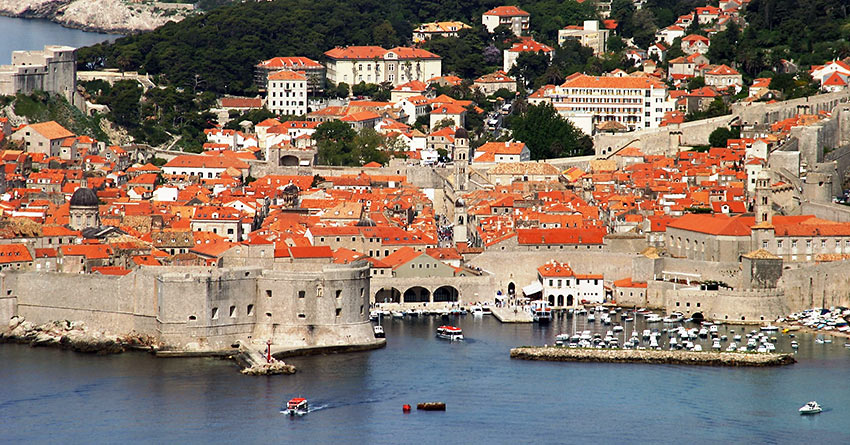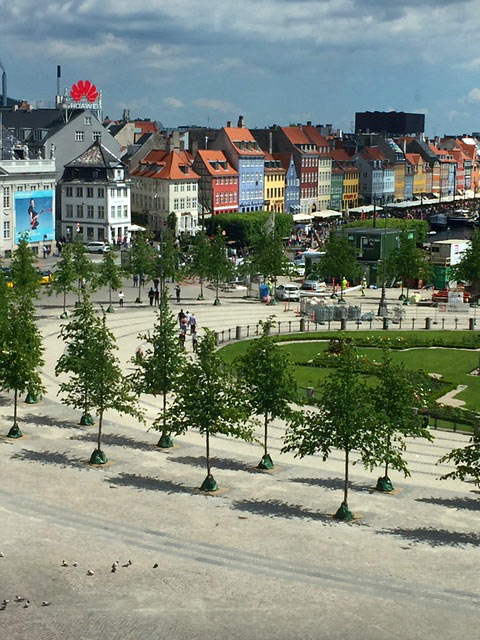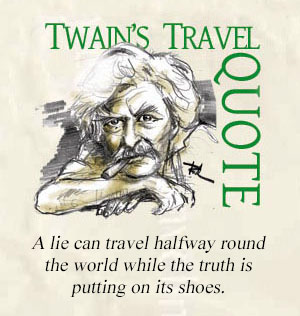Europe Plans to Open the Door to Vaccinated Americans
Courtesy Eric Anderson, Times Union

The European Union plans to throw open its borders this summer to fully vaccinated Americans. But Canada still won’t let us in.
The next best thing? Maybe you can fly to Paris and pretend you’re in Montreal.
While details remain sketchy, the head of the European Commission told the New York Times on Sunday that leisure travel to the European Union by fully vaccinated Americans could resume this summer.
“The Americans, as far as I can see, use European Medicines Agency-approved vaccines,” EC President Ursula von der Leyen told The New York Times in Brussels. “This will enable free movement and the travel to the European Union.”
“I think it’s great news,” said Jean Gagnon, who operates Plaza Travel in Latham. She added that mask restrictions and social distancing protocols will still remain. But the EU move “means we’re on the right track.”
Each EU state still must decide how and when it will reopen, and reach an agreement with the U.S.
“We are encouraged by President von der Leyen’s comments, which are a positive step toward safely reopening international travel between the U.S. and the EU,” said Katherine Estep, managing direcctor, communications, for A4A. “We continue to urge the U.S. to implement a reciprocal policy that allows travelers who are fully vaccinated to travel to the U.S.”
There will still be some risk to travelers. Before boarding their flight home, they will need to show a negative test result for Covid-19 taken no more than three days before their departure. The CDC also tells passengers to get a viral test three to five days after travel.
“Even fully vaccinated, they’re still going to have to take a test to get back into the U.S.,” Gagnon said. “Can you afford to not come home for 10 or 14 days?”
Meanwhile, Canadian officials say they’re making progress against Covid-19. Canadian news site La Presse reported that Dr, Theresa Tam said Covid-19 restrictions could be eased as soon as mid-July or August. Tam is chief public health officer at the Public Health Agency of Canada.
The agency projects that 75 percent of Canadians will have received a first dose of vaccine by then, and 20 percent will be fully vaccinated. On Monday, the Johns Hopkins Coronavirus Resource Center said just 2.75 percent of Canadians had been fully vaccinated.
Canadian officials so far haven’t suggested easing any border restrictions.
“There is no major discussion currently along such lines involving Canada and the U.S.,” said Garry Douglas, president and CEO of the North Country Chamber of Commerce in Plattsburgh. “Canadian Public Health recently predicted that normalcy might be reached in Canada by mid to late summer, assuming they have vaccinated 75% of their population by then. This is consistent with a sense that no substantial progress at the border is likely before fall.”
The North Country Chamber will host a one-hour webinar at 9 a.m. Wednesday on how and when to reopen the Canadian border. Speakers include Jean Charest, former Deputy Prime Minister of Canada and now a member of the Washington-based Wilson Center Canadian Institute panel studying this question, as well as U.S. Rep. Elise Stefanik, co-chair of the Congressional Northern Border Caucus, Charles Milliard, president and CEO of Fédération des chambres de commerce du Québec, and Douglas.
Details may be found at northcountrychamber.com
Now, with Europeans moving to ease some restrictions, North Country officials hope Canada and U.S. will do the same.
“[C]onsistent with the EU action, we do continue to call for at least some modest interim steps by summer that could initially be limited to the vaccinated,” Douglas said. “For example, access to property and boats in the other country, enhanced connections with family, and additional allowances for business travel linked to cross border investments and supply chains.”
Travel to Europe: A Reopening Timeline, Country by Country
Courtesy Jamie Ditaranto, Trip Savvy

Europe was one of the regions hardest hit by the novel coronavirus at the beginning of the pandemic, but after strict lockdowns, many countries saw steep declines in death and infection rates in the summer of 2020. However, many European countries struggled to bring down the second wave in December, which was followed by a third wave in March 2021.
New strains of the coronavirus reported to be 50 to 70 percent more contagious were discovered in the UK, prompting many countries in Europe to impose new travel bans and harsher restrictions on all travelers coming from the UK. Most European countries have stringent restrictions — if not full lockdowns — in place, and travel between European countries is difficult as many countries have closed their borders to non-citizens and non-residents. Some European countries, like Croatia and Iceland, are waiving testing requirements for vaccinated travelers.
The European Union (EU) maintains its ban on citizens from the U.S. and other highly-affected countries. Despite the second and third waves, some borders are open across the EU and the Schengen Area and tourists from 15 non-European countries have been deemed epidemiologically safe by the EU. This list includes Algeria, Australia, Canada, Georgia, Japan, Montenegro, Morocco, New Zealand, Rwanda, Serbia, South Korea, Thailand, Tunisia, Uruguay, and China (on the condition of reciprocity by China).
The list is just a recommendation, and EU member countries are not obligated to stick to it. Some countries work off a more limited list, while others may allow citizens of countries not on the list, like the United States, to enter. Every European country is handling the crisis differently, so read on to learn the latest travel requirements and lockdown conditions in each.
Austria
U.S. citizens are not allowed to enter Austria and a travel warning remains in place for Austrians who wish to visit the U.S. Approved travelers arriving from high-risk countries need to provide proof of a negative PCR test, taken within 72 hours, or an antigen test, taken within 48 hours. They will also need to quarantine for 10 days. Travelers will also need to register their trip online before entering Austria.
The Baltics
U.S. citizens are not allowed to enter any of the Baltic nations of Estonia, Latvia, and Lithuania. Travelers from other high-risk countries may have to show a negative test or agree to quarantine, but in Estonia, fully vaccinated travelers can skip quarantine requirements. The ministries of health for Estonia, Latvia, and Lithuania, each maintain their own lists of countries considered high-risk. The government of Latvia announced that foreigners will only be allowed to enter if they qualify for a serious reason.
Belgium
The Belgium government has banned all leisure travel to and from Belgium, with few exceptions. Anyone allowed to travel will also be required to fill out a Public Health Passenger Locator Form. Belgium’s government introduced a new requirement for all travelers arriving from a red zone to be PCR tested on their first and seventh day in Belgium and to quarantine until the second test returns negative. Travelers from the UK, South Africa, and South America must quarantine for 10 days with the option to test out on the seventh day.
Bulgaria
In late November, Bulgaria’s case rates surged and the country went back into lockdown. Bulgaria is allowing citizens of the European countries to enter in addition to 10 countries on the EU’s list, plus the United Arab Emirates and Israel. A negative PCR test taken within 72 hours will be necessary for entry. U.S. citizens are not allowed to enter Bulgaria unless they qualify for an exception.

Croatia
Tourists are once again allowed to enter Croatia, but they will need evidence of accommodation and a negative PCR test taken within 48 hours of entering. Travelers who can show proof of vaccination will be allowed to enter without a test. It’s not necessary to quarantine.
Czech Republic
In late January, the Czech Republic closed its borders to all foreign citizens, except for those traveling for essential purposes. Anybody who has spent more than 12 hours in the UK within 14 days prior to entering the Czech Republic must present a negative PCR test taken within 72 hours. U.S. citizens are not permitted to enter the Czech Republic.

Denmark
U.S. citizens are not allowed to enter Denmark unless they qualify for “a worthy purpose,” which could mean anything from having a job interview or business meeting in Denmark. If a traveler qualifies for one of these exceptions, they will be required to show a negative test taken within 24 hours before arriving, get tested again upon arrival, isolate for 10 days.
Finland
Until April 30, Finland has prohibited all entry of non-resident foreigners and requires a 10-day quarantine for anyone eligible to enter if their origin country has infection rates above 25 per 100,000 people, travelers will have to get tested before leaving and upon arrival in Finland. Travelers from the UK will need to isolate for 14 days, but this can be shortened if they produce two negative tests during the quarantine. U.S. citizens are not allowed to enter Finland unless they qualify for an exception.
France
France’s borders are open to travelers from European countries, plus those arriving from Australia, Israel, Japan, New Zealand, Singapore, South Korea, or the United Kingdom. U.S. citizens are not allowed to enter France.
After a brief shutdown of travel to and from the UK, France loosened restrictions to allow travel from the UK for any reason, as long as the traveler provides a negative PCR test and isolates for seven days. They must also sign a sworn statement that they are not experiencing symptoms and have not been in contact with anyone with a confirmed case.
Germany
Germany entered a full lockdown in mid-December, which will keep all non-essential businesses and services closed until May 9. During the lockdown, overnight stays for tourists will not be allowed and travelers arriving from any high-risk area will be required to quarantine for 10 or 14 days, depending on if you arrive from a “virus variant area.” Any traveler who has spent time in the UK arriving by another means will also need to show a negative test result taken within 48 hours of entering Germany in addition to the quarantine.
Greece
Greece has opened its doors to U.S. citizens in addition to citizens and residents of the EU, Australia, Japan, New Zealand, Russia, Rwanda, Singapore, South Korea, Thailand, and the United Arab Emirates. Travelers must show proof of vaccination or a negative PCR test taken within 72 hours. Residents of the U.S., EU, Schengen states, the UK, United Arab Emirates, Serbia, and Israel are exempt from quarantine.
Hungary
Hungary shut its borders in September to all international travelers, including the EU and Schengen countries, and has not yet reopened. Some exceptions for entry into Hungary may be granted for U.S. citizens, but those travelers will still need to self-quarantine for 10 days.

Iceland
Travelers who can prove they have been fully vaccinated or already contracted and recovered from COVID-19, with an antibody test conducted in Europe, will be allowed to skip quarantine and testing procedures. Non-vaccinated travelers must quarantine for five days at home or in a hotel and test negative for COVID-19 twice before leaving. Before traveling to Iceland, travelers will need to fill out the pre-registration form and download Iceland’s contact tracing app. Travelers will be tested first upon arrival in Iceland and will need to register their quarantine location with the government. All travelers arriving in Iceland will need a negative PCR test taken within 72 hours in addition to the double-screening system.
British citizens are not allowed to enter Iceland for non-essential reasons and all travelers, regardless of nationality, coming from the UK must self-isolate on arrival without the option to test out.
Ireland
All travelers entering Ireland will need a negative PCR test result taken within 72 hours of departure and quarantine for 14 days. If you’re arriving from Northern Ireland, the mandatory quarantine does not apply. Anyone who arrives without a test may be subject to a large fine. Travelers from some high-risk countries, including Austria, Brazil, and the UAE, will have to quarantine upon arrival in Ireland’s hotel quarantine system. The U.S. is not included on this list.

Italy
A negative test taken within 72 hours will be required to fly to Italy and travelers must submit to another test upon arrival and a 14-day quarantine. Prior to travel, all travelers must complete a self-declaration form and be tested within 48 hours. Travelers must self-isolate for five days and take another test at the end of the fifth day. U.S. citizens are not allowed to enter Italy unless they are traveling from an exempted country for a qualified exception.
The Netherlands
All international travelers who are entering the Netherlands from countries that are exempt from the EU travel ban will need a negative PCR test to enter the Netherlands. All travelers who are allowed to enter the Netherlands will need a negative PCR test. Anyone entering the Netherlands flying from the UK will also need to self-isolate for 10 days. U.S. citizens are not allowed to enter the Netherlands.
Norway
Norway has closed its borders to all non-essential travel from any country. Anyone traveling to Norway will be required to quarantine for 10 days, except for some European countries and regions that have been deemed low-risk. All travelers must be tested upon arrival and those coming from high-risk countries must also show a negative test before departing for Norway. For travelers arriving from the UK, South Africa, Ireland, the Netherlands, Austria, Portugal, and Brazil, the test must be a PCR test. Norway is still closed to travelers outside of Europe, including U.S. citizens.
Poland
Poland restricts entry of all foreign nationals except for citizens of the EU, Iceland, Liechtenstein, Norway, Switzerland, Georgia, Japan, Canada, New Zealand, Thailand, South Korea, Tunisia, and Australia. U.S. citizens may be allowed to enter if they qualify for an exception, but they will need a test taken within 48 hours or will be required to self-quarantine for 10 days. Vaccinated travelers will also be exempt from quarantine.

Portugal
Flights from South Africa and Brazil have been suspended and flights to other countries will only be permitted for essential travel. If a traveler from another country qualifies for an exemption, they will be required to show a test taken within 72 hours of departure and quarantine for 14 days. Americans are not allowed to travel directly to Portugal from the United States, but they will be allowed to enter if they arrive from an approved EU member state or an epidemiologically safe country that they are a resident of. In March, Portugal tightened restrictions to only allow essential travel for anyone coming from an EU country with more than 500 cases per 100,000 people.
Romania
Romania reopened for tourism for EU and Schengen Area countries in July but still restricts entry from high-risk countries like the U.S. Travelers may be exempted from any quarantine requirements if they have been fully vaccinated.
Russia
Russia has kept its borders closed to all non-Russian citizens, except for those who are traveling to Russia for medical treatment or to care for a relative. Only travelers that have a valid Russian visa or can demonstrate citizenship are allowed to enter. Everyone traveling to Russia will be required to present a negative PCR test taken within the previous three days of their arrival with no requirement to quarantine. All flights between the UK and Russia are suspended until June 1.
Serbia
After reopening for tourism in June with few limitations, the Serbian government introduced new restrictions in the fall requiring all foreigners, including U.S. citizens, arriving in Serbia to show a negative PCR test result taken within 48 hours of arrival, but there’s no need to quarantine. Fully vaccinated travelers do not need to show a negative test.
Spain
In Spain, lockdown restrictions vary by region, and an updated list of regulations by autonomous region can be found on the official Spanish Tourism Board website. U.S. citizens are not allowed to enter Spain unless they qualify for an exception or meet specific requirements. Spain is restricting passenger travel to South Africa and Brazil with exceptions for Spanish citizens and residents.
Spain grants entry to citizens of eight of the EU’s list of epidemiologically safe countries, including Australia, China, New Zealand, Rwanda, Singapore, South Korea, and Thailand. Travelers coming from approved countries are asked to complete a health control form online, which will give them the QR code they will need to show upon entry in Spain in addition to undergoing a health check. Travelers from high-risk areas must also be tested within 72 hours of arriving in Spain.
Sweden
Despite Sweden’s controversial decision to stay open at the start of the coronavirus outbreak, the government has now banned non-essential travel from visitors outside of the European Economic Area (EEA). Any exempt traveler must provide a negative test taken within 48 hours before flying into Sweden. A second test will be required on the fifth day of the trip.

Switzerland
Anyone traveling from a high-risk country will be refused entry, but borders are open to citizens and residents of Schengen Area countries, plus the epidemiologically-approved third countries. All travelers arriving by air will need a negative PCR test taken within 72 hours. Switzerland will require Swiss residents returning from the UK to produce a negative test result and complete an online contact tracing form. U.S. citizens may be allowed to enter Switzerland if they are traveling for essential purposes, without needing to quarantine.
Turkey
Foreign tourists are exempt from curfews and do not need travel permits. Turkey has reopened its borders to travelers from many countries, including the U.S. All passengers traveling to Turkey will undergo a health exam upon arrival and must provide a negative PCR test result taken within 72 hours before departure. Direct flights have been suspended from Brazil, the UK, Denmark, and South Africa, and anyone who has visited these countries within 10 days before entering Turkey will be required to quarantine for 14 days.
Ukraine
Borders are open, but there are some rules for travelers coming from high-risk countries. In Ukraine, the U.S. is considered a “Red Zone” country, so U.S. citizens are allowed to enter, but they will have to go into self-quarantine or be tested upon arrival at the airport in addition to showing proof of health insurance. Travelers won’t be required to self-quarantine if they can show a negative test result taken within 72 hours.
United Kingdom
Each country within the United Kingdom — England, Scotland, Wales, and Northern Ireland — is operating independently to mitigate the spread of the virus and have different guidelines in place to manage the reopening. Upon the discovery of a more contagious strain of the virus circulating in the UK, more areas have moved into the highest tier of restrictions and anyone living in a fourth tier region will not be allowed to travel abroad unless they qualify for one of the government’s limited exceptions. The travel ban is expected to last until May 17. On its website, the BBC offers a tool to look up the latest COVID-19 restrictions by city.
Anyone entering the UK from a hotspot will need to quarantine in a government-run hotel for 10 days, which must be pre-booked before they travel. They will need two negative tests before they can be released and must sign the travel declaration form. Everyone else, unless they are traveling from Ireland, must self-isolate at home and will be required to test negative twice before being allowed to leave quarantine. Before flying, everyone will need one negative test.
Each country within the United Kingdom has its own list of approved “travel corridors,” which can be found on the official websites of Wales, Scotland, Northern Ireland, and England. The United States is not on any of these lists, but U.S. citizens may be eligible to travel to the UK so long as they fill out the Passenger Locator Form, get tested, and commit to self-isolating for 10 days.

























